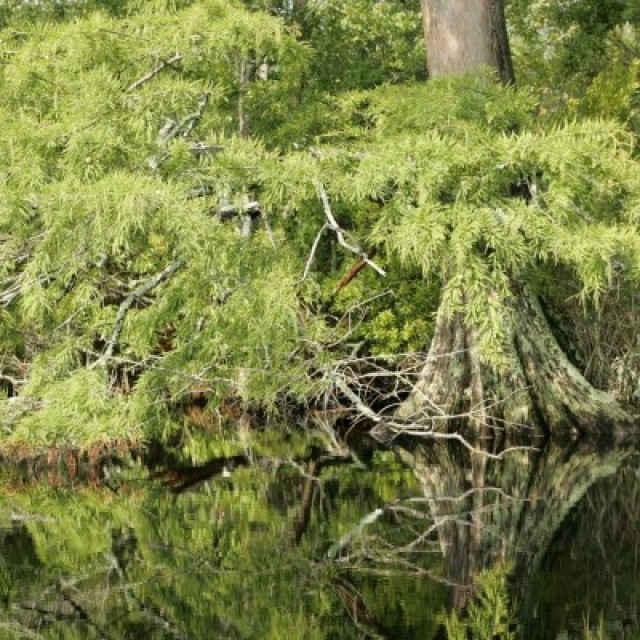COMMON NAME
Bald cypress
SCIENTIFIC NAME
Taxodium distichum
ALSO KNOWN AS
Gulf cypress, Pond cypress, Red cypress, Swamp cypress, White cypress
Plant family
Cypress (Cupressaceae)
Plant group
Conifers
Bald cypress trees are deciduous conifers with flat, alternately arranged deciduous needles. The flowers are tassel-like structures at the end of branchlets.
473 reports
145+
OBSERVERS
473+
OBSERVATIONS
Identification hints
The flat deciduous needles distinguish bald cypress from most other conifers. The ornamental dawn cedar (Metasequoia glyptostroboides) is similar in appearance to small bald cypresses but has branchlets and needles arranged opposite (rather than alternate as found in bald cypress).
Did you know?
They are called 'bald' because of their deciduous nature which is unusual in conifers. Because it is resistant to wood-rotting fungi, bald cypress is valued as softwood lumber for shingles, trim, and especially for greenhouse benches and racks. Cypress swamps provide important habitat for endangered species like limpkins and wood storks. Cypress swamps store flood waters, serve as recharge areas for ground water, and filter pollutants from surface water. It is often planted as an ornamental tree. Trees can live over 1,200 years.
DISTRIBUTION IN TH U.S.
Alabama
,
Arkansas
,
Delaware
,
Florida
,
Georgia
,
Illinois
,
Indiana
,
Kentucky
,
Louisiana
,
Maryland
,
Missouri
,
Mississippi
,
North Carolina
,
New Jersey
,
New York
,
Ohio
,
Oklahoma
,
Pennsylvania
,
South Carolina
,
Tennessee
,
Texas
,
Virginia
,
West Virginia
HABITAT
Bald cypress is found in wet, swampy areas often with submerged soils such as floodplains, lakes, stream margins, and swamps. Bald cypress typically grows in areas of moving water and fluctuating water levels. It is found from Delaware to south Florida, into Texas and Oklahoma, and north up the Mississippi floodplains to Illinois and Indiana
ATTRIBUTES
Leaves
The needle-like leaves are borne alternately on new shoots. The short light-green, linear needles are twisted at the base making them appear as flattened feather-like branchlets. The leaves are borne on deciduous branchlets that are spirally arranged on the stem but twisted at the base to lie in 2 horizontal ranks.
Flowers
The flowers are tassel-like structures at the end of branchlets. Male catkins are at least 2 in (5 cm) long and very conspicuous during the winter months arranged in narrow, drooping clusters about 4 in (10 cm) in length. Flower buds appear in December or January and disperse pollen in March and April.
Fruits
The spherical cones are about 1 in (2.5 cm) in diameter and have between 10 and 25 scales. Each scale has 1 to 2 seeds. Initially, the cones are green and turn brown at maturity. The cones disintegrate when mature to release the large seeds and are dispersed by water. The seeds are 0.2 to 0.4 in (5 to 10 mm) long and are produced every year. Heavy crops happen every 3 to 5 years.
Bark
The bark can be light brown, gray brown, or red brown. It is furrowed to smooth with a stringy texture. The trunk base is deeply ridged (rounded ridges in pond cypress).
See Menu
- 2021 Chicago Botanic Garden. All Rights Reserved.
-
Creative Commons
BY-NC-SA 4.0 - Terms of Use
- Privacy Policy
- Data Sharing and Citation Policies
- 2021 Chicago Botanic Garden. All Rights Reserved.



